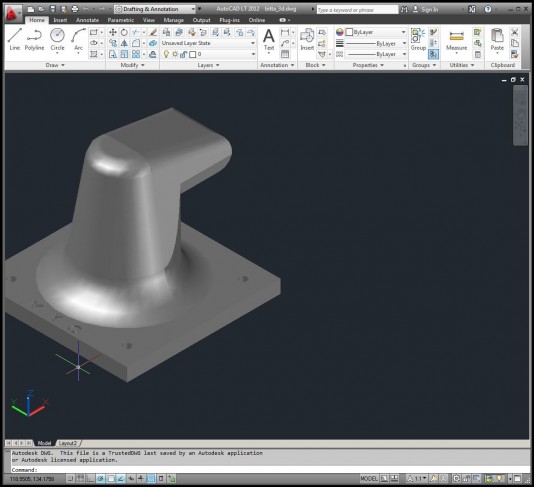Virtualization of these architecture and infrastructure tools is in response to customer demand.
Autodesk has expanded the number of its products that are compatible with virtualization tools from Citrix. There are now eight major products verified as Citrix Ready, which means the software can on a different computer than where it is hosted, using Citrix XenApp technology. Autodesk says the upgrade of the products to work with Citrix technology is due to customer demand.

The eight products verified as Citrix Ready are:
- AutoCAD 2012
- AutoCAD Architecture 2012
- AutoCAD Map 3D Enterprise
- AutoCAD Mechanical 2012
- AutoCAD MEP 2012
- Autodesk Revit Architecture 2012
- Autodesk Revit Structure 2012
- Autodesk Revit MEP 2012
AutoCAD 2012 is available now; the others will be shipping in the next few weeks.
The terms ‘virtualization’ and ‘remoting’ are often used interchangably to describe the process of hosting software on a server and running it somewhere else, but they not the same. Remoting defines the benefits, virtualization defines the technology.
Autodesk says using its applications through Citrix XenApp provides the benefits of centralized computing (improved software deployment, configuration standardization, work-in-progress data distribution), as well as mobile computing, extending the reach of design data beyond the desk.
Autodesk became a member of the Citrix Ready program in 2008 with AutoCAD Map 3D. The Citrix Ready program helps customers identify software products tested for suitability and recommended to work with Citrix Systems’ virtualization, networking and cloud computing solutions. Autodesk completed what one employee called “a rigorous verification process” to ensure compatibility with Citrix XenApp 5 and Citrix XenApp 6.
In a conversation with GraphicSpeak, Robert Vizza, Autodesk’s director of strategic global alliances, explained typical use cases for Citrix Ready design products based on experiences with Autodesk customers. One US-based customer wanted to outsource some design work to China, but was concerned about data exposure and the possibility of a product being manufactured and sold in China before his company even finishes the design work. They want to use Citrix so the design work can be done remotely but the design data resides in the US.
Two other usage examples come from an IT perspective, based on cost effectiveness. With Citrix software, virtualization technology allows server consolidation. IT departments can also streamline the process of upgrading user software, doing one install on a server instead of one install per deployed desktop.
Global architecture firm HOK uses both Autodesk and Citrix products. “Nearly every HOK project requires staff from multiple offices to collaborate on the same Revit model,” says HOK’s John Bartolomi, vice president and director of IT Services. “All previous attempts to enable this type of collaboration presented challenges and unsatisfactory results. Running Revit over Citrix has solved a problem that seemed unsolvable just a few years ago. It provides a near desktop-like experience over rather modest bandwidth even over long distances. The Revit 2012 for Citrix is further optimized to take advantage of this great technology.”
A year in development
Vissa says it took Autodesk about a year to make the eight products Citrix Ready. “The work we did was to insure all the licensing could be done apprpropriately, that the installs all worked right and other compatibility issues. The Citrix technology really takes care of the remoting capability.” Autodesk looked into virtualization “several years ago,” Vissa says, but didn’t think the technology was ready for the intensive computation and graphics display processing required of CAD. “We believe the technology is finally to a place where it provides a ‘good enough’ user experience for our customers.”
Vissa is quick to acknowledge not every Autodesk customer is interested in virtualization. “If a customer already runs Citrix and if AutoCAD is the only thing they can’t run, that’s an issue. This is customer demand we are answering.”





